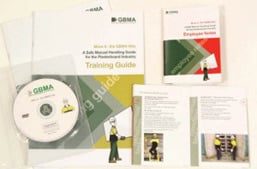
Four Ways to talk to Senior Management about Safety
 Last week, we looked at three different arguments to convince senior management about why they need to care about safety.
Last week, we looked at three different arguments to convince senior management about why they need to care about safety.
This week, we're going to look at how to communicate those arguments. Just make sure you also have figures and information from your own company that adds to the previous arguments.
1. See, feel, change - In the book, The Heart of Change by John Kotter and Dan Cohen they recommend that to get people to care about your workplace problems they need to feel the emotion of it. This is where you need to get creative and use an engaging visual to show what would happen if company directors ignored safety and what the consequences would be. Use the arguments from the previous article to also hone into the importance of the problems at hand.
Starting the Conversation
In the book, Conversations for Change by Shawn Kent Hayaski, she mentions the need for three types of conversations when dealing with disengaged staff:
2. Conversations for commitment - This is where you need to take a stand and be really clear on what you expect from the board or company directors. This is a great conversation to run with, after you've shown a compelling visual image that pinpoints the real problem (Eg: staff injury, graph that shows an escalating injuries, competitors safety record v. your safety record).
Start the conversation with "What do you think we need to do to make safety an important priority?" and "What are you willing to commit as a result of our current reality?" Remember to be understanding and on their side. Then, make it clear what you need. For example: "Companies that are world class in safety break down the silo mentality and include safety in everything they do. I want your help with introducing the importance of safety at our company for some new recruits we've got coming in next week". Other phrases you can use are "The reason this is so important to us is..." and "Would you be interested in these outcomes?"
3. Conversations for Action - Once you've explored the options and know what you require from company directors, it's time to get everyone to act on it. The is particularly important when you've got commitment, but action is slow. You will want to use this after the conversation for commitment, but also over time, to ensure things stay on track. Ask: "What is the next action?" and "What will you do next" or "Let's create a list of what involvement we need from you"
4. Conversations for Accountability - This is where you clarify all the important steps required from company directors and what you expect them to do in terms of safety. Make sure you have their accountability by ending the conversation with "What would it take for you to?" and "Will you agree to...?".
To get executives thinking more about safety and not ignore it, you need to make sure that you are really prepared before your meeting with them.
You will need to spend time preparing:
-
A compelling visual (such as a photo or video that really shows what the key problem is)
-
Questions to ensure their commitment
-
Questions to ensure action, and
-
Questions to ensure they are accountable.
A safety professional must work towards a safe workplace and this includes getting senior management behind safety. These techniques will help ensure that your company lives and breathes safety from bottom to top.

